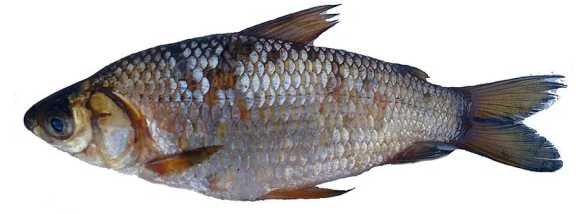BASIC INFORMATION ABOUT CATLA FISH (KATLA FISH)
Catla fish is also known for its fast growth and for the most important aquacultured fish species in the regions of South Asia, the growth of the fish happens at its best in water temperatures between 25 to -32 degree Celsius. Catla is also known as Labeo Catla.
The scientific name of this fish is also Catla. These fishes have acquired regularity of living in the rivers of Northern India, the Indus Plain, and adjoining hills of Pakistan, Bangladesh, Nepal, and Myanmar which are later introduced into all riverine systems, reservoirs, and tanks all over India.

The characteristics of the fish include a large and broad head a large protruding lower jaw, and an upturned mouth. It also has large, grayish scales on its dorsal sides and whitish color on its belly. The size of the Catla fish is approximately 182 cm (6.0 ft) in length and weighs up to 38.6 kg (851 lb) in adulthood.
The scientific characteristics of this fish include Kingdom Animalia phylum Chordata Family Cyprinidae genus Labeo, species l.catla. The fish includes a rich amount of omega-3 fatty acids, proteins, and vitamins like B12, niacin tryptophan, etc, and minerals like iron, sodium, calcium, etc.
The containment of the omega-3 in this fish helps our heart to maintain its health and it has proven in the American heart association recommends people eat fish rich in unsaturated fats at least twice a week. These unsaturated fats are also called omega-3 fatty acids.
PRESENCE OF MERCURY IN CATLA FISH (KATLA FISH)
Calta also contains mercury as we see in Tuna fish and Catfish. As we know there is a high amount of Mercury contentment nowadays in fish Due to the large amount of water pollution Done by the factory Releases waste and Mercury Which is highly intoxicant in nature because of which the life below water has threatened. Mercury causes a very bad effect on the nerves of human beings Which is neurotoxic in nature. Mercury itself is a very harmful metal.
The safe concentrations of Mercury ranged between 12.1332 To 19.689 Microg/l for Catla according to the National Library of Medicine. Some fish lovers or generalized people are concerned about the presence of mercury and other containment in seafood.
The benefits of eating fish as a healthy diet provoke the risk of exposure to these containments. It is a fact that at least two servings a week of fish and fish which are rich in omega-3 fatty acids, reduce the risk of heart disease, particularly sudden cardiac death.
FARMING OF CATLA FISH (KATLA FISH)
This species of fish feeds on the surface and midwater. When they become adults they feed on zooplankton using large gill rokers but young ones feed on both zooplankton as well as phytoplankton. Among all the fish species of cards, Catla is the most difficult species to breed because it requires precise environmental conditions.
Catla grows up to 1-1.2 kg in the first year, compared to 700 to 800 g these fishes are nursery-raised fry of 20-25 mm and are further reared for 2-3 months to 80-100 mm (6-10 g) fingerings in earthen ponds of 0.05-0.2.
Catla is reared with Rohu and Mrigala in equal proportion at combined densities of 0.2-0.3 million fry ha. The most required condition to grow Catla is under temperatures of 25 degrees to 35 degrees Celsius. Organic and inorganic fertilizers should also be provided to the Catla fish.
DIET OF CATLA FISH (KATLA FISH)
Catla basically feeds on zooplankton and phytoplankton. Except for mature fish which generally feed on zooplankton. Catla also consumes fingerlings vegetable debris along with lager size zooplankton. Catla fish belongs to the omnivores fish category which feeds at the surface of the water and mainly on zooplankton.
REPRODUCTION OF CATLA FISH (KATLA FISH)
Among the major species of fish, Catla faces more difficulty in the breeding period as it requires more precise environmental conditions for Spawning. Under normal conditions, this fish grows up to 1-1.2kg in the first year as compared to 700-800g and 600-700g for rohu and mrigal, respectively. It gains sexual maturity at the age of two years
Catla-Nutritive Value Of Common Foods
Energy(Ecals):- 111
Moisture(gm):- 74
Protein(gm):- 19
Fat(gm):- 2
Mineral(gm):- 1
Fibre(gm):- –
Carbohydrates(gm):- 3
Calcium(mg):- 530
Phosphorous(mg):- 235
Iron(mg):- 1
10 Amazing Health Benefits of Catla Fish
Catla is a Freshwater fish and is extremely healthy.
1. The Rich source of vitamin A.
2. Rich in omega-3 fatty acids which is good fat and has remarkable benefits for the human brain & improves memory.
3. Catla also contains iodine and selenium.
4. Catla has collagen, which is a good medicine for the skin, it improves the elasticity of the skin.
5. Catla has vital elements like such as iodine, zinc, selenium, and potassium which keep healthy.
6. According to a recent study, Catla fish lowers the amount of cholesterol in the blood and improves blood circulation.
7. It was observed that it helps in relieving the symptoms of Asthma.
8. Catla fish oils contain Omega 3 fatty acids useful in serious inflammatory bowel diseases (BD), such as colitis and Crohn’s disorders.
9. Catla has omega-3 fatty acids which keep protecting the Eyesight and keep it bright and clear.
10. It lowers the risk of heart disease because it is low in saturated fat and high in omega 3.
FAQs
Catla fish in Telugu?
కాట్లా చేప
Catla fish in Tamil?
கட்லா மீன்
Does Catla fish have bones?
Yes
Can Dogs eat Catla fish? Is Catla fish good for dog to eat?
Yes.

2 thoughts on “CATLA FISH (KATLA FISH) | 10 Amazing Health Benefits of Catla Fish”